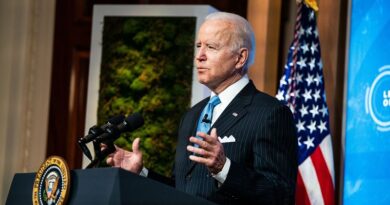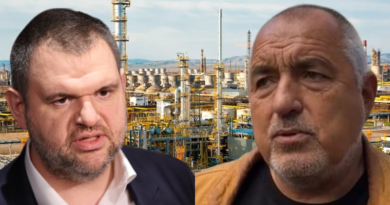Sanctions as catalyst
How US Magnitsky Act sanctions might provide an impetus for the de-oligarchisation of the Bulgarian economy. Or might not.
Recent US sanctions against Bulgarian oligarchs and government officials have catalysed public perception of the threat that oligarchisation poses to social and economic development. The associated expectations are immense, but success is not guaranteed. Here’s why.
The top oligarchs who have been sanctioned so far—Vasil Bozhkov and Delyan Peevski—are prominent figures embodying the oligarchic class-dominated control over public resources and development opportunities, in a situation where notions like “the market” and “competition” are no more than academic trivia. In this situation, the most precious political capital is connectedness. This consists in proximity to decision-makers in public procurement and corruption networks; in knowing the ‘right’ people among civil servants, politicians, magistrates and the media; and in enjoying the prosperity and immunity that this ensures.
But, obviously, the fact that Mr Bozhkov and Mr Peevski are prominent, iconic, and symbols of their class doesn’t mean they are its only members – or the only possible and legitimate targets for sanctions.
Consider Ahmed Dogan and Hristo Kovachki.
Two of a kind
Mr Dogan was for decades (1989-2013) leader of the mainly ethnic Turkish Movement for Rights and Freedoms (MRF) and is still assumed to pull strings there behind the scenes. It was Dogan, in fact, who seems to have sponsored the political career of Mr Peevski, who sat for some time as a member of parliament for the MRF. But Mr Dogan’s public persona nowadays is that of 70% owner of the giant (1260 MW) Varna Thermal Power Plant (TPP)—a stake which he acquired in early 2018.
As to Mr Kovachki, his status as an “energy oligarch” is of longer standing. For the best part of the last two decades he has accumulated and run an empire of coal mines, district heating companies (DHCs) and thermal power plants. In formal terms he is “consultant” rather than owner in many cases—the formula “companies connected with” crops up a lot in press accounts—but there’s generally no doubt as to who is in charge. Mr Kovachki has dabbled in politics, insofar as, in 2007, he established a political party (called LIDER), but it enjoyed no success in national elections and is best seen as a sort of oligarchic fashion accessory. In terms of deeper politics—and business—there’s a good deal of evidence of close links with Mr Dogan, the wily ex-MRF leader being the dominant partner. And, like Mr Dogan, Mr Kovachki owns a large coal-fired power plant, the 630-MW Bobov Dol TPP.
Stepping on the gas
Now, to see Messrs Dogan and Kovachki as unrelated to those sanctioned so far—and, therefore, as not possible targets of sanctions themselves—would be naïve in the extreme. And, to judge from their reactions to events, it’s a naivety neither suffers from. With a view to creating faits accomplis, the two made public new investment plans for gas turbines at their respective TPPs, which could potentially be subject to secondary sanctions due to Delyan Peevski’s involvement.
A little background is in order. The two TPPs have something in common: they are assets that will soon have zero value as coal-fired plants. Aged and compromised by EU environmental regulations, their operations are limited and on sufferance. Varna TPP, for instance, has basically been idling in recent years and has worked only as a “cold reserve”—an emergency supply source when the grid is short of generating capacity. And Bobov Dol TPP has been reduced to improving its financials by burning imported waste—a bad move because it’s simply asking for regulatory trouble. The only way to maintain their value is for them to operate on gas.
Hence those proposed gas turbines. Mr Dogan is proposing to invest €450 million in two of them, with a combined capacity of 550MW, to replace two existing coal-fired units. Mr Kovachki’s proposal is for 600 MW of replacement gas-fired capacity at Bobov Dol TPP, costing €500 million. That, incidentally, is a price-tag well out of Mr Kovachki’s league, so it can be assumed that Mr Dogan is the real mover behind that scheme too.
These articles analyses and comments are made possible thanks to your empathy and contributions, which are the only guarantors of independence and objectivity in our work. The Alternatives and Analysis team.
Oh, those Russians….
Now, regular readers of this blog will have noticed that, when the word “gas” occurs, the word “Gazprom” tends not to be far away. This case is no exception. Both projects will indeed involve Gazprom, its export arm Gazexport and associated Russian companies and banks, and Peevski has recently been leading negotiations with these on attracting investments and securing gas for Varna TPP—in a grand scheme that also includes developing port infrastructure.
This fits into the Kremlin’s strategy of diversifying its presence in the region by signing contracts with private companies before the expiry of its long-term contracts (LTCs) for gas supply. That’s what has happened in Greece, where, in addition to a new contract with the state-owned gas company DEPA, it has signed an LTC with the local Mytileneos Group. Gazprom’s game-plan is apparently to replicate this approach in Bulgaria, where its LTC with state-owned Bulgargaz ends in 2023. Which would allow corporate entities associated with Dogan, Peevski and Borisov—the trio by then credited with the successful completion of Turk Stream-2—to be awarded LTCs with Gazexport and to profit from the new gas demand resulting from gas-fired generation.
Of course, the new gas-fired TPP deal would need to include investment finance as well as gas supply arrangements.
Given post-sanctions restrictions on the Bulgarian Development Bank and other commercial banks in the country, Bulgarian bank finance will not be available. European banks will shy away from a project that could potentially be related to the sanctioned Mr Peevski. EU money is equally unlikely to be forthcoming, even though both the Varna and the Bobov Dol project are to involve hydrogen, which is to form 30% of Varna TPP’s resource base—a tempting sweetener for green-minded Eurocrats.
So the only feasible option for funding these projects will be resort to Russian (and possibly Turkish) companies and banks, for some combination of direct or proxy debt and equity finance. The Russians are unlikely to have a problem with this. It’s precisely the scheme being used for Turk Stream. And it’s a way of achieving an objective very dear to the heart of the real decision-maker, Russian president Vladimir Putin: by building further on its extensive corruption network of compliant and well-rewarded local oligarchs, the Kremlin would secure its dominant role in Bulgaria’s energy sector.
Two snags
But there are two potential obstacles.
The first is that even an entirely Russian financing package would need a nod of approval from the Bulgarian government. It would also require a certain degree of political support—enough, at least, to accommodate Mr Dogan’s needs and to allow new versions of corruption schemes to be put in place. That may or may not prove to be a problem. With new elections now less than a month away and the possible coalitions that might result from them something of a conundrum, the political future of Bulgaria is unclear. Mr Borissov is presumably finished, politically, and the precise re-creation without him of his constellation of corruption—“Borissovism without Borissov”, as it were—is unlikely in the extreme. However, it should be noted that the MRF remains strong and that fragmentation among (self-styled) anti-corruption forces might favour some rather improbable deals if the election result proves complex. Which it almost certainly will.
The second possible obstacle is that Varna TPP and Bobov Dol TPP face competition. There are also the even bigger TPPs of the Maritza East (Maritsa Iztok) region. Lignite-fired now, these are the subject of draft plans for a partial or complete coal-to-gas switch, which is a condition of the life-extension they are currently seeking. However, there’s not enough demand for gas-fired power to cover all five producers’ supply projections. This means that Ahmed Dogans’s projects will have to compete against the Maritza East TPPs—which could be politically interesting, since two of them (AES Galabovo and TPP Maritza-East 3) are operated by American-companies and the TPP Maritza East 2 is state owned. So the prospect for Russo-US energy rivalry looms large.
Towards a happy ending?
So how will things turn out? Well, my take is that the odds are now heavily against the Kremlin-linked oligarchs. But victory for their opponents won’t be walkover. Nor is it a foregone conclusion.
After all, the oligarchs have proved their resilience and exceptional skills in adapting and absorbing EU funds, using benefit-sharing agreements with German, Austrian and other Russia-friendly European intermediaries. The fact that Varna TPP has announced it would be using turbines supplied by Germany’s Siemens is hardly accidental. And there’s no definite sign that the EU and Germany are about to kick their long-standing habit of accommodating the Kremlin’s interests. If they continue, and if Mr Dogan’s alarmingly wide assortment of political proxies wins the forthcoming parliamentary elections, gains from the US sanctions could be reversed or diluted, consolidating the base and reach of Russia’s oligarchic model.
In short, the American Magnitsky Act sanctions are a unique chance and boost for the de-oligarchisation of Bulgarian political and economic life. But they are no guarantee of ultimate success. And stopping at Mr Bozhkov and Mr Peevski might make that success less likely.
Ilian Vassilev
Thank you for your donations via PayPal and bank transfers to IBAN BG58UBBS80021090022940




